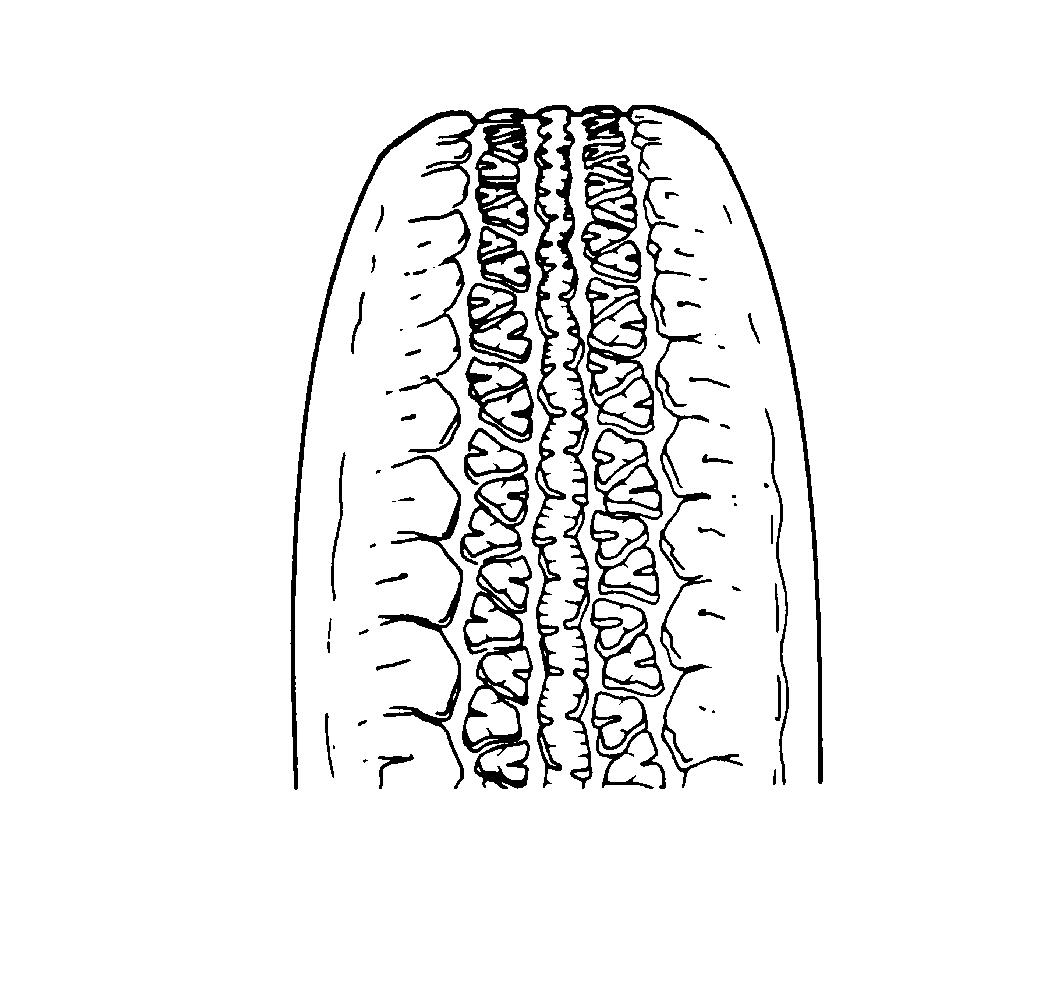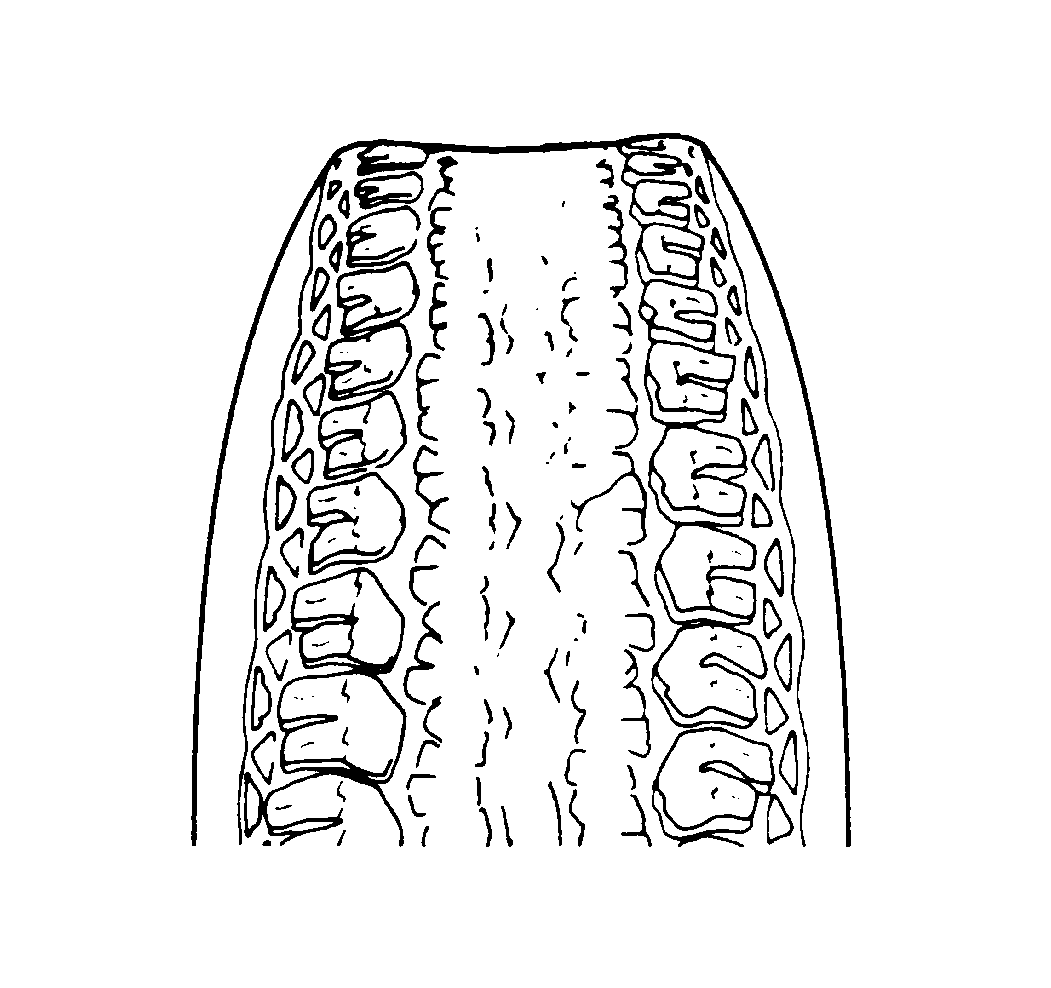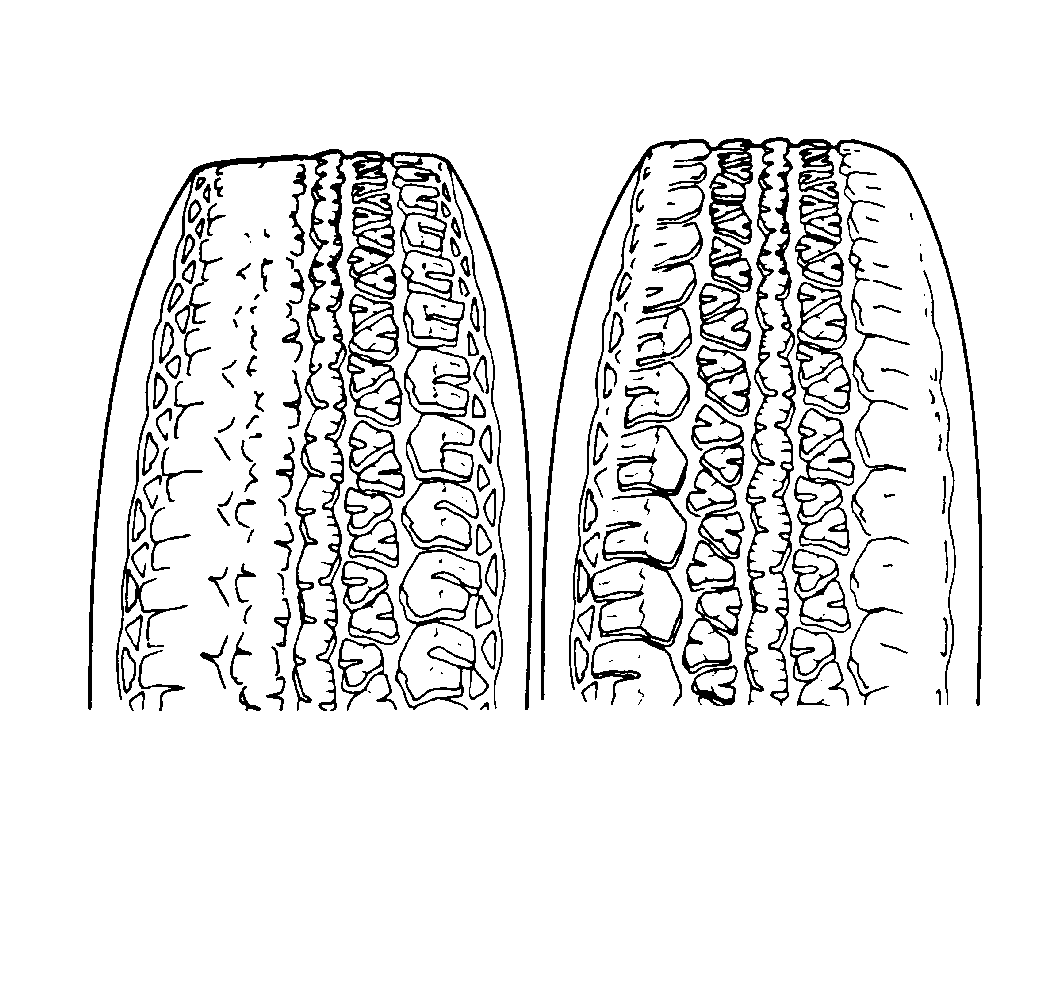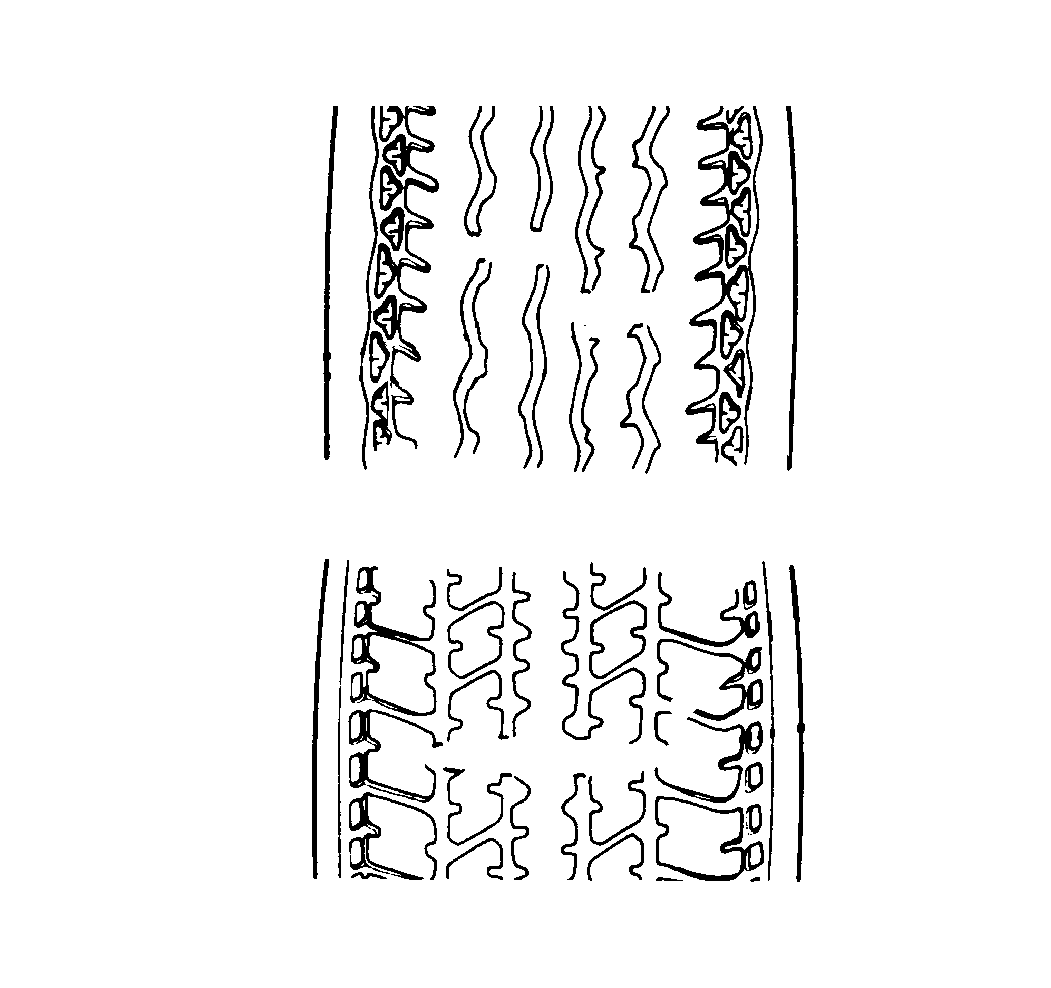For 1990-2009 cars only
Abnormal or Excessive Tire Wear Diagnosis
| • | Inspect for hard or severe driving. |
| • | Inspect for unrotated tires. |
| • | Inspect for the wrong inflation pressure. |
| • | Inspect for broken or sagging springs. |
| • | Inspect for unbalanced tires. |
| • | Inspect for a worn strut dampener or shock absorber. |
| • | Inspect for an overloaded vehicle. |
| • | Inspect the wheel alignment. |
Abnormal or Excessive Tire Wear Scuffed
| • | Inspect for excessive speed on turns. |
| • | Inspect for a bent or twisted suspension arm. |
| • | Inspect for incorrect toe. |
Abnormal or Excessive Tire Wear Cupped
| • | Inspect the wheel alignment. |
| • | Inspect for worn strut dampeners or shock absorbers. |
| • | Inspect for a worn hub and bearing assembly. |
| • | Inspect for excessive tire or wheel runout. |
| • | Inspect for a worn ball joint. |
| • | Inspect the rack bearing preload. |
Abnormal or Excessive Tire Wear Irregular Tire Wear
- Irregular and premature tire wear has many causes. The following are some indicators:
- If the wheel alignment is reset due to a tire wear condition, reset the toe as close to zero degrees as the specification allows.
- Rotate the tires if the front tire wear is different from the rear tire wear.
- Rotate the tires if an uneven wear exists across the tread of any tire.
- Rotate the tires if the left and right front tire wear is unequal.
- Rotate the tires if the left and right rear tire wear is unequal.
- Check the wheel alignment if the front left and right tire wear is unequal.
- Check the wheel alignment if the wear is uneven across the tread of any front tire.
- Check the wheel alignment if the front tire treads have a scuffed appearance with feather edges on one side of the tread ribs or blocks.

| • | An incorrect inflation pressure (1, 2). |
| • | A lack of regular rotation. |
| • | Any irregular driving habits. |
| • | An improper wheel alignment. |



Abnormal or Excessive Tire Wear Tread Wear

The original equipment tires have built-in tread wear indicators (1) in order to show when the tires should be replaced. These indicators will appear at 12.7 mm (½ in) wide bands when the tire tread depth becomes 1.6 mm (2/32 in). Replace the tire when the indicators appear in two or more grooves at 3 locations.
